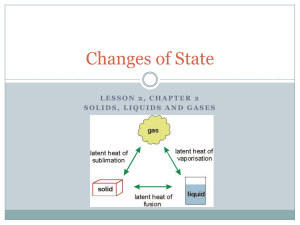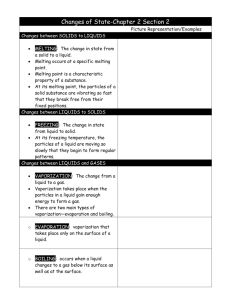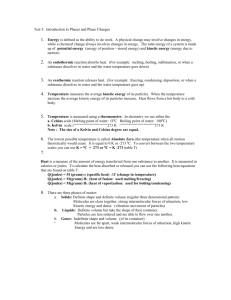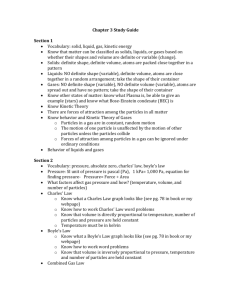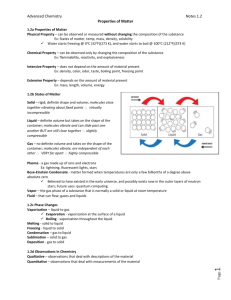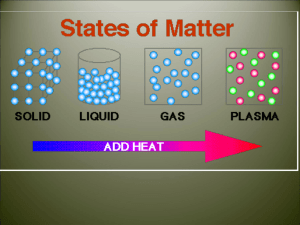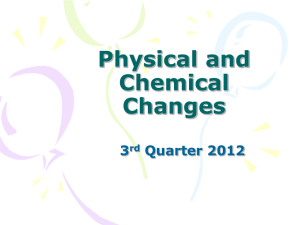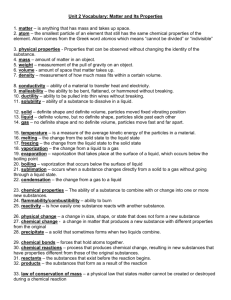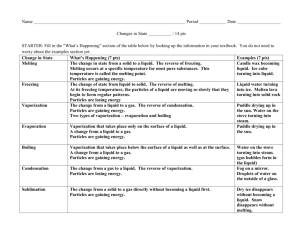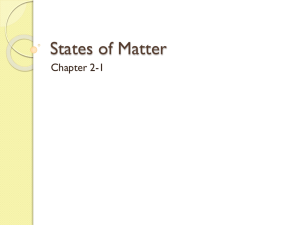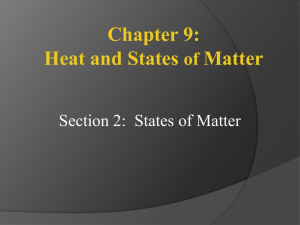States of Matter Quiz Review
advertisement
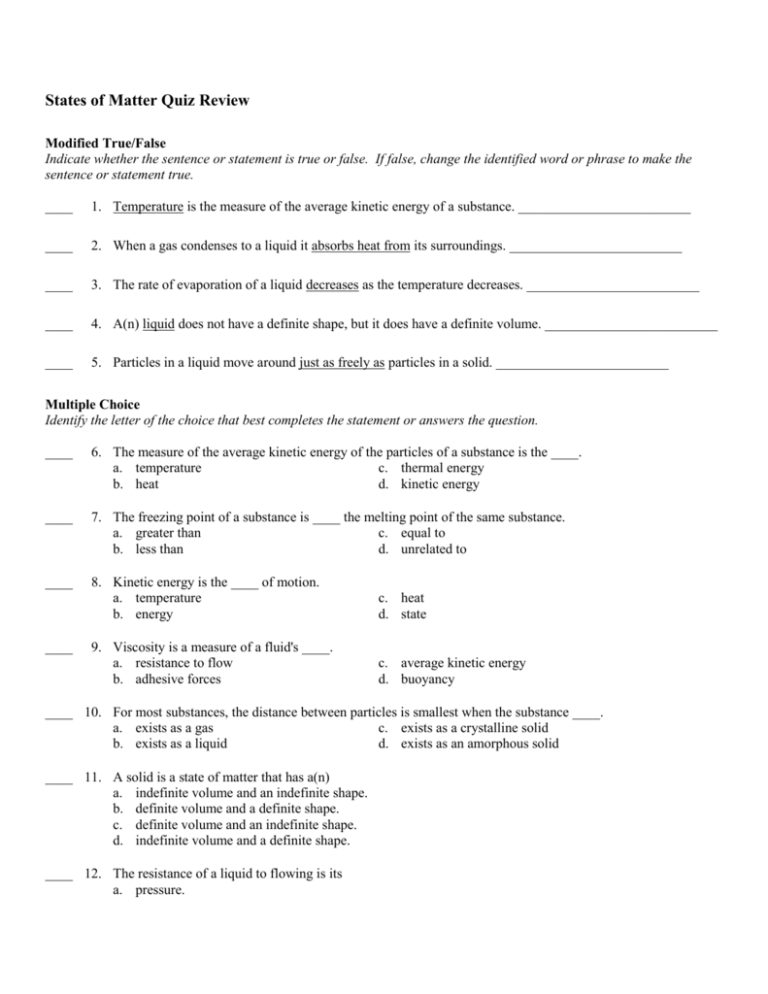
States of Matter Quiz Review Modified True/False Indicate whether the sentence or statement is true or false. If false, change the identified word or phrase to make the sentence or statement true. ____ 1. Temperature is the measure of the average kinetic energy of a substance. _________________________ ____ 2. When a gas condenses to a liquid it absorbs heat from its surroundings. _________________________ ____ 3. The rate of evaporation of a liquid decreases as the temperature decreases. _________________________ ____ 4. A(n) liquid does not have a definite shape, but it does have a definite volume. _________________________ ____ 5. Particles in a liquid move around just as freely as particles in a solid. _________________________ Multiple Choice Identify the letter of the choice that best completes the statement or answers the question. ____ 6. The measure of the average kinetic energy of the particles of a substance is the ____. a. temperature c. thermal energy b. heat d. kinetic energy ____ 7. The freezing point of a substance is ____ the melting point of the same substance. a. greater than c. equal to b. less than d. unrelated to ____ 8. Kinetic energy is the ____ of motion. a. temperature b. energy c. heat d. state 9. Viscosity is a measure of a fluid's ____. a. resistance to flow b. adhesive forces c. average kinetic energy d. buoyancy ____ ____ 10. For most substances, the distance between particles is smallest when the substance ____. a. exists as a gas c. exists as a crystalline solid b. exists as a liquid d. exists as an amorphous solid ____ 11. A solid is a state of matter that has a(n) a. indefinite volume and an indefinite shape. b. definite volume and a definite shape. c. definite volume and an indefinite shape. d. indefinite volume and a definite shape. ____ 12. The resistance of a liquid to flowing is its a. pressure. b. temperature. c. viscosity. d. volume. ____ 13. Particles of a liquid a. are tightly packed together and stay in a fixed position. b. have no viscosity. c. decrease in volume with increasing temperature. d. are free to move in a container but remain in close contact with one another. ____ 14. In which state of matter do the particles spread apart and fill all the space available to them? a. crystal b. liquid c. gas d. solid ____ 15. During the process of sublimation, a. a solid turns directly into a gas. b. a solid turns into a liquid. c. a gas turns directly into a solid. d. a liquid turns into a gas. ____ 16. The change from liquid to solid, or the reverse of melting, is called a. condensation. b. boiling. c. sublimation. d. freezing. ____ 17. The freezing point of water is the same as its a. melting point. b. boiling point. c. sublimation point. d. evaporation point. ____ 18. What is vaporization? a. a gas becoming a liquid b. a liquid becoming a solid c. a gas becoming a solid d. a liquid becoming a gas ____ 19. An uncovered pot of soup is simmering on a stove, and there are water droplets on the wall above the back of the stove. What sequence can you infer has occurred? a. melting, then boiling b. freezing, then thawing c. vaporization, then condensation d. condensation, then vaporization ____ 20. The opposite of vaporization is called a. condensation. b. sublimation. c. evaporation. d. freezing. ____ 21. In which state of matter are particles packed tightly together in fixed positions? a. gas b. solid c. liquid d. compound Completion Complete each sentence or statement. 22. To calculate the density of a sample of matter, you must divide its ____________________ by its ____________________. 23. The change in state from a gas to a liquid is called ____________________. 24. The temperature at which ice changes into liquid water is called its ____________________. 25. Heat is the ____________________ of thermal energy from a higher temperature to a lower temperature. 26. Vaporization is when a ____________________ changes into a ____________________. 27. A shrinking puddle is an example of ____________________, or vaporization that takes place only on the surface of a liquid. 28. When a substance cools, it loses ____________________ energy to its surroundings. 29. ____________________ occurs when particles in a gas lose enough thermal energy to form a liquid. 30. ____________________ is a measure of the average energy of motion of the particles of a substance. 31. ____________________ occurs when a liquid changes to a gas below its surface as well as at the surface. 32. The temperature of a substance increases when the ____________________ energy of the substance increases.

